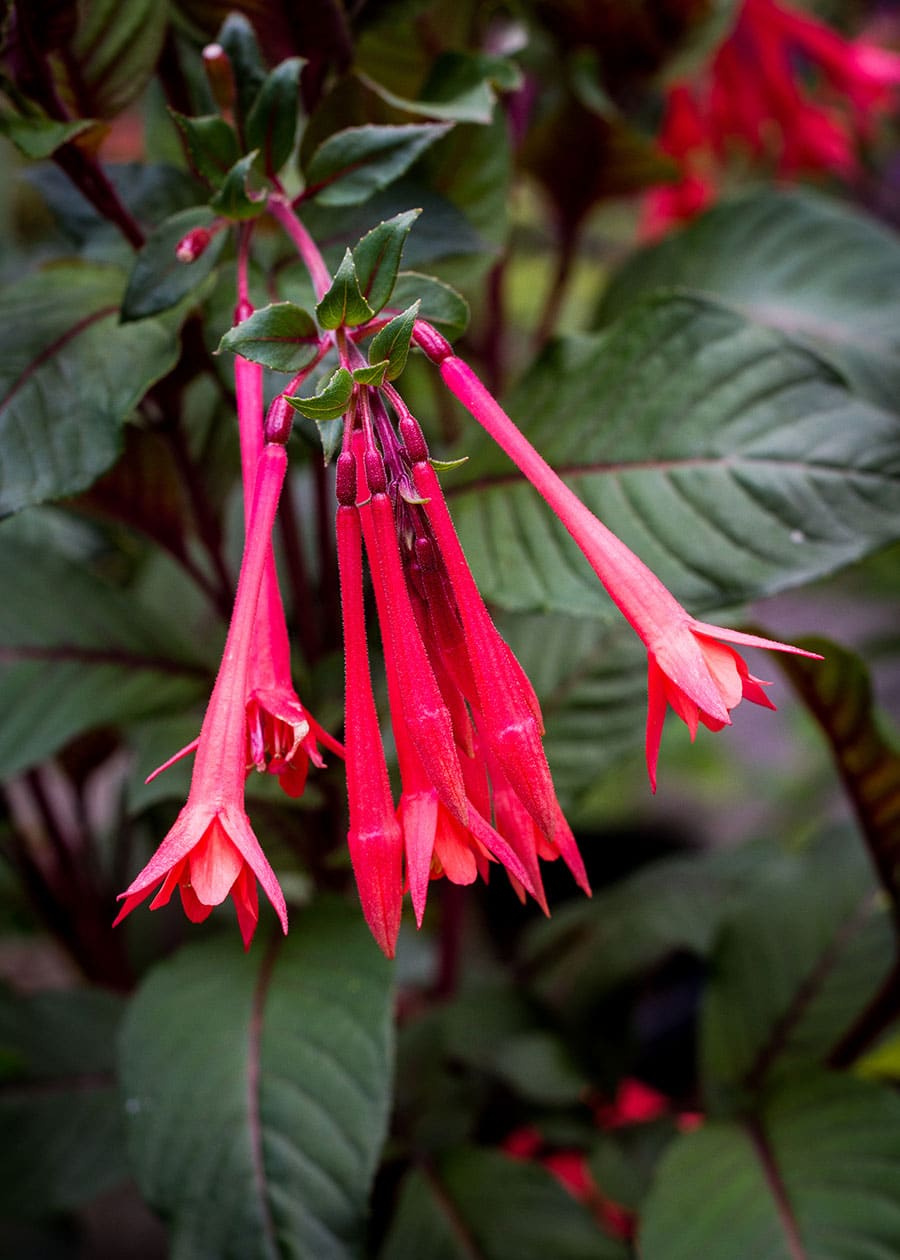
The garden looks like it has been on steroids with so such growth from the rain, and seedpods are rapidly developing on plants that produced flowers. There’s still plenty of growing time left in the season, but some housekeeping is necessary if plants are to resume good form and continue to bloom.
Summer annuals that have been valiantly pumping out blooms are, in some cases, diverting energy from flower production into making seeds, and it’s much too early to let that happen. The Daddy Blue petunias are leggy and making seeds where flowers have dropped, so I’ll cut them back and remove any remaining seed heads. It’s interesting that the coral-orange Papaya petunias have no seeds forming, and I have plant breeders to thank for that.
Other annuals, such as ‘Gartenmeister’ fuchsia and ‘Mini Cascade Red’ pelargoniums, also need cutting back. All of them will get a water-soluble fertilizer with a higher middle number (like 15-30-15) to encourage bud production and get them back into flower-producing mode.
Perennials are in much the same circumstances, having raced through their primary bloom cycle. The first and largest apical blooms are produced at the tips of their growing stems. If those flowers finish and are quickly removed before seed production begins, side shoots will be triggered in lateral leaf axils, and there will be new flushes of flowers. Many perennials like butterfly bush, penstemon, border phlox, Shasta daisy and salvia follow this pattern, and now is the time remove all spent flowers. New side shoots will quickly develop and bloom in two to three weeks.
This is also the time to cut back spring growth on roses and fertilize, prompting another big flush of flowers to develop and last through late summer and into early fall. If I have roses in the garden, I want to do everything I can to increase flower production. I’ll give them a rose fertilizer, and another dose of Epsom salts scratched into their surrounding soil to encourage the production of new wood that will carry more flowers. Enough water has passed through the soil to flush out any Epsom salts applied in spring. I’ll add a half a cup (125 mL) of Epsom salts to small shrubs and a full cup (250 mL) to large shrub roses.
Even woody shrubs and trees have overgrown themselves in the lush heat and moisture conditions. Summer-blooming spireas will bloom a second time if their spent flower heads are removed. My ‘Red Jade’ weeping crabapple has really gotten carried away with excessive “crying” and now blocks part of the front walk. It needs to be cut back and shaped so that it will have a more balanced appearance. Low hanging branches of a river birch are also blocking the main garden path and snaring the postman; I saw him batting them away just to get through to our mailbox.
Sitting in my favourite reading chair this morning to enjoy a carefully constructed view, I realized something had changed. In only a few short weeks, trees have extended tender new twigs and branches, blocking off the sky and concealing my neighbour’s Juliet balcony that cascades with hanging summer annuals. Someone’s got to get out and fix that!
